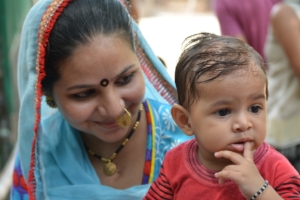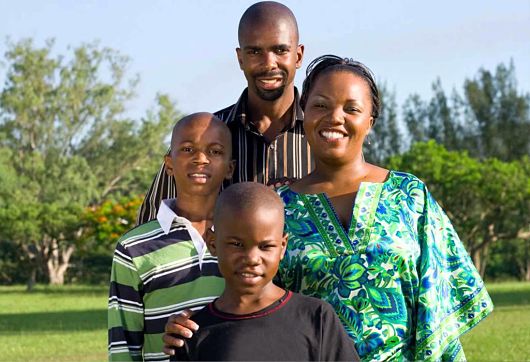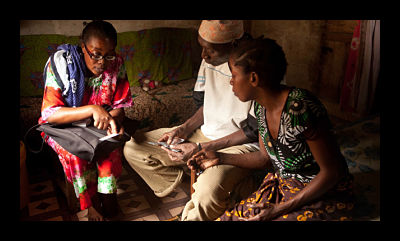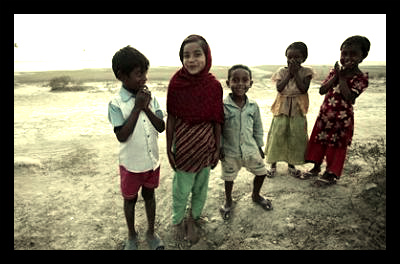 Youth pregnancies in Côte d’Ivoire declined by an astounding 20 percent since the Zero Pregnancies in School Campaign began in 2013, according to the United Nations Population Fund. This campaign is part of a nationwide plan, supported with technical and financial assistance from UNFPA, to enable young people to make informed decisions about their sexual and reproductive health.
Youth pregnancies in Côte d’Ivoire declined by an astounding 20 percent since the Zero Pregnancies in School Campaign began in 2013, according to the United Nations Population Fund. This campaign is part of a nationwide plan, supported with technical and financial assistance from UNFPA, to enable young people to make informed decisions about their sexual and reproductive health.
During the 2012-2013 academic year, 5,076 students became pregnant in primary or secondary school, reported the Ivorian Ministry of National and Technical Education. While the teen-age birth rate globally is 50 per 1,000 girls, in Côte d’Ivoire, the number is 125.
The 2013 UNFPA State of World Population report found that 7.3 million girls, 18-years-old and younger, give birth each year in developing countries. This reality is both a health issue as well as a development issue. Many pregnant girls are forced to drop out of school creating downward-spiraling repercussions of limited prospects.
“It is deeply rooted in poverty, gender inequality, violence, child and forced marriage, power imbalances between adolescent girls and their male partners, lack of education, and the failure of systems and institutions to protect their rights,” said Dr. Babatunde Osotimehin, UNFPA Executive Director.
The high birth rates in Côte d’Ivoire undermine the country’s ability to take advantage of a demographic dividend. A demographic dividend is a window of opportunity to hasten economic growth when a population’s age structure shifts from one with fewer people of working age (15 to 65) to one with fewer dependent people (under 14 and over 65).
In response to this situation, the Ivorian Council of Ministers formally adopted the accelerated pregnancies reduction plan on April 2, 2014. The plan is a comprehensive program that integrates sexuality education in Côte d’Ivoire, teaching over several years starting in 4th grade to provide age-appropriate information at each stage.
Based on human rights principles, sexuality education encompasses more than sex education. The fundamental components of the curriculum feature the information about the human body, contraception and sexual and reproductive health. This includes knowledge about sexually-transmitted diseases and the effects of early pregnancy. The curriculum also addresses the issues of child marriage and gender-based violence so that human rights, gender equality and the empowerment of young people is advanced.
The comprehensive program offers other school activities beyond the classroom. Nationally, student clubs are being formed to raise awareness, and an arts and culture festival is planned where students can display their creative endeavors, such as plays, poems, stories and drawings about pregnancy in school. UNFPA has helped the government open a call center that provides free, confidential information. To disseminate information about health and services, various media, such as leaflets, videos, radio announcements and SMS messages will be disseminated.
Much of the needed education involves demystifying contraception and pregnancy. Amina, a pregnant student, revealed: “I did not take contraceptives because my mom told me that it might make me sterile.” Some girls are also told that not getting pregnant by age 15 or 16, “is a problem,” remarked Clarissa, 22.
The Zero Pregnancies in School Campaign was launched in Bondoukou, the most affected area in Côte d’Ivoire. Students in the region brought banners to the event with such messages as “Zero pregnancy in school, I endorse it,” “You don’t get a child pregnant” and “I am a child. A child doesn’t bear a child. A child goes to school to succeed.”
The government is making even further changes. Laws have been introduced that increase penalties for the sexual abuse of minors. Most significantly, this includes sanctions against teachers who abuse their students. Girls are often pressured into sex with teachers in order to get good grades.
Additionally, the government is planning to build better housing for the 10,000 to 15,000 students in cities that must board. This will enable the young students to have proper housing where boys and girls do not have to share a room.
The government also no longer expels girls when they are pregnant, and girls are returning to school after giving birth. Amina told UNFPA, “My mom takes care of my baby when I come to school.” Clarissa’s mom also takes care of her son. Clarissa explained to UNFPA that she still has her dreams: “I lost a school year,” but “I want to become a teacher.”
– Janet Quinn
Sources: UNFPA, UNFPA, Demographic Dividend, UNFPA
Photo: Flickr
 Janani, an affiliate of DKT International, has started a mobile family planning project. Twenty outreach teams in vans provide family planning services to rural and hard-to-reach areas in India. This helps expand access to family planning options.
Janani, an affiliate of DKT International, has started a mobile family planning project. Twenty outreach teams in vans provide family planning services to rural and hard-to-reach areas in India. This helps expand access to family planning options.





